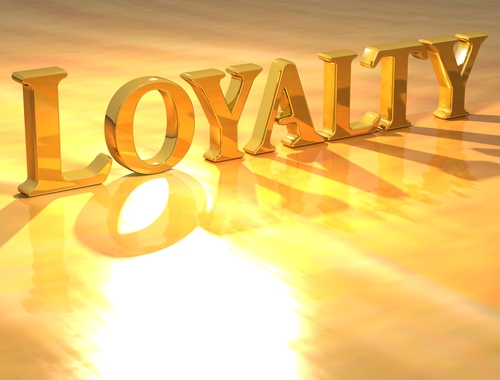“Thank you for being a loyal customer.” This is a phrase I've heard many times over the last few months. It makes me think about the companies in my personal portfolio and how I interact with those companies. Do they really appreciate my loyalty? Am I really a loyal customer? How much money have I spent for their service over the years? Was the price of their services really worth it? How did my most recent interaction with their company stack up against my expectations? Were these companies really thankful that I was a loyal customer, or were they just thankful that I was satisfied enough with their services to keep paying for them? I’d like to see the cup as being half full, but let’s be honest: What I am really being told is “Thank you for being a satisfied customer,” or just a plain “Thank you for your business.”
There is a distinct difference between being a “satisfied customer” and a “loyal customer.” Customer satisfaction is determining or measuring whether customers’ expectations were met or exceeded, based on a recent experience. Being loyal means creating interactions that foster a positive emotional response. Loyal customers tell others about how great the company is and how these companies treat their customers. Customer loyalty is tied to an experience. Consumers are willing to pay more for a better experience. According to Harris Interactive, even in a negative economy, customer experience is a high priority for consumers, with 60% often or always paying more for a better experience Loyalty will create a differentiator between you and the competition. Here are some tips to start the transition from having satisfied customers to building loyal ones.
Promote your company: Promoting your company isn't just marketing. Communicate with your customers frequently and often. This can include events, promotions, product features, product lists, newsletters, self-service improvements, and community involvement activities. This communication can be done in many different ways: mail, email, text, Facebook, LinkedIn, and Twitter. We have the means of reaching our customers through more channels than ever, so why not be the company whose name is always on their mind.
Provide “memorable” service experiences: The front-line employees are the face of your company. They have the best knowledge regarding what customers like and don’t like about your service and products. Educate your employees on how they can impact the customer experience and how to create an experience that is unforgettable. This can be as simple as integrating your interactive-voice response system (IVR) with your customer-relationship management (CRM) system so that your employees have the customer account information available when they answer the phone, or a being proactive to anticipate customer needs such as Letting a customer know when their next billing statement will be ready. Training employees to anticipate the needs of your customers will keep them coming back for more.
Recognize: Find a way to recognize customers for staying committed to your brand. This can be as simple as an anniversary card that recognizes how long they have been a customer Try a phone call, a birthday wishes card, a rewards program, or something that says “we know how long you have been a customer.”
By following these best practices, you can distinguish yourself from the competition and go from having satisfied customers to loyal customers.




